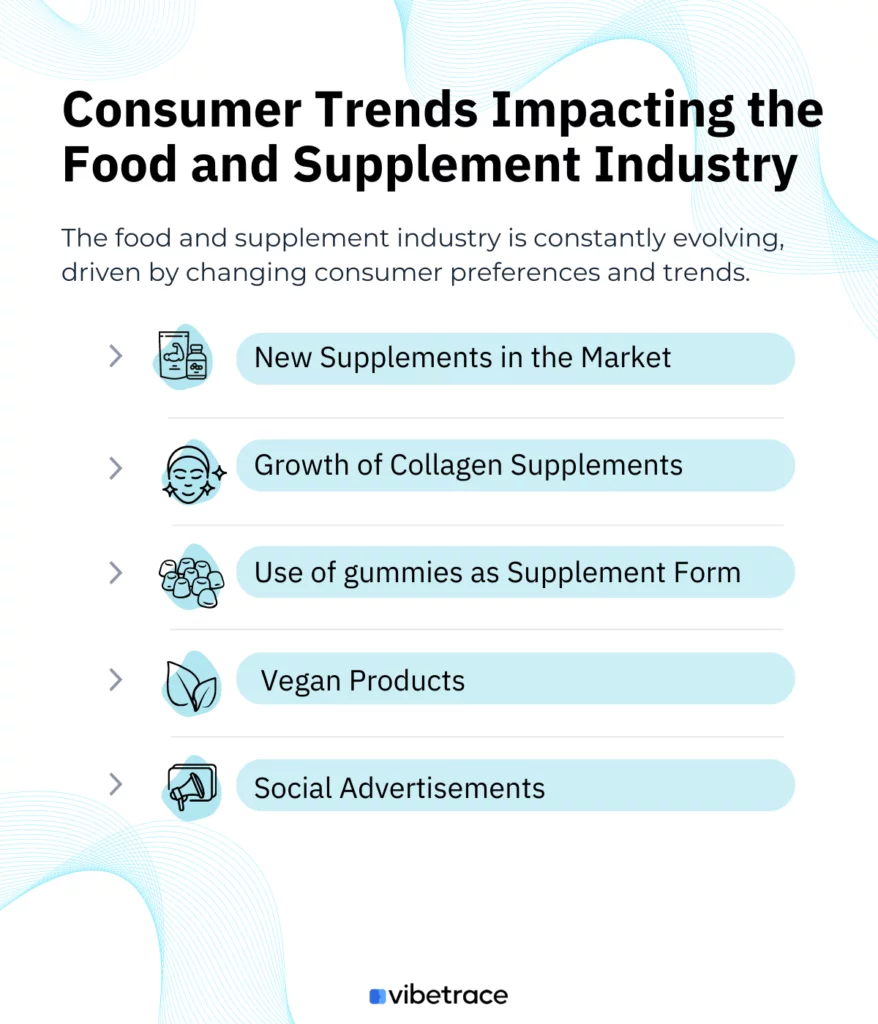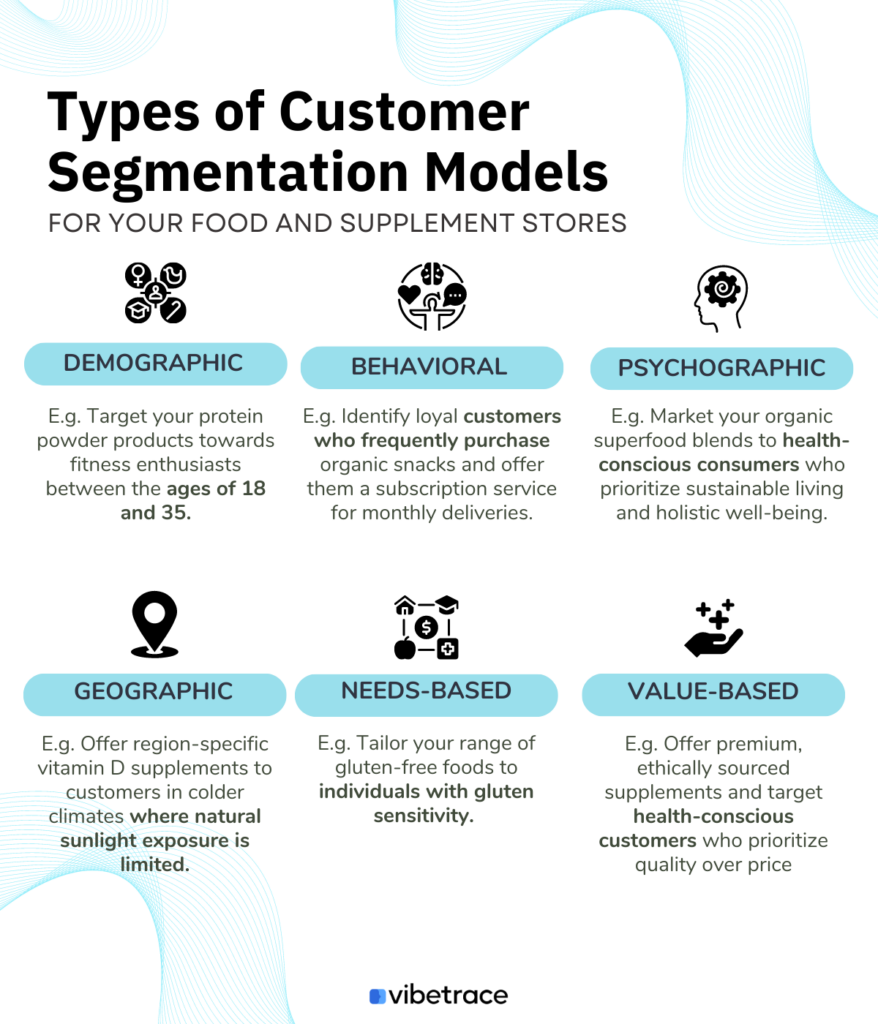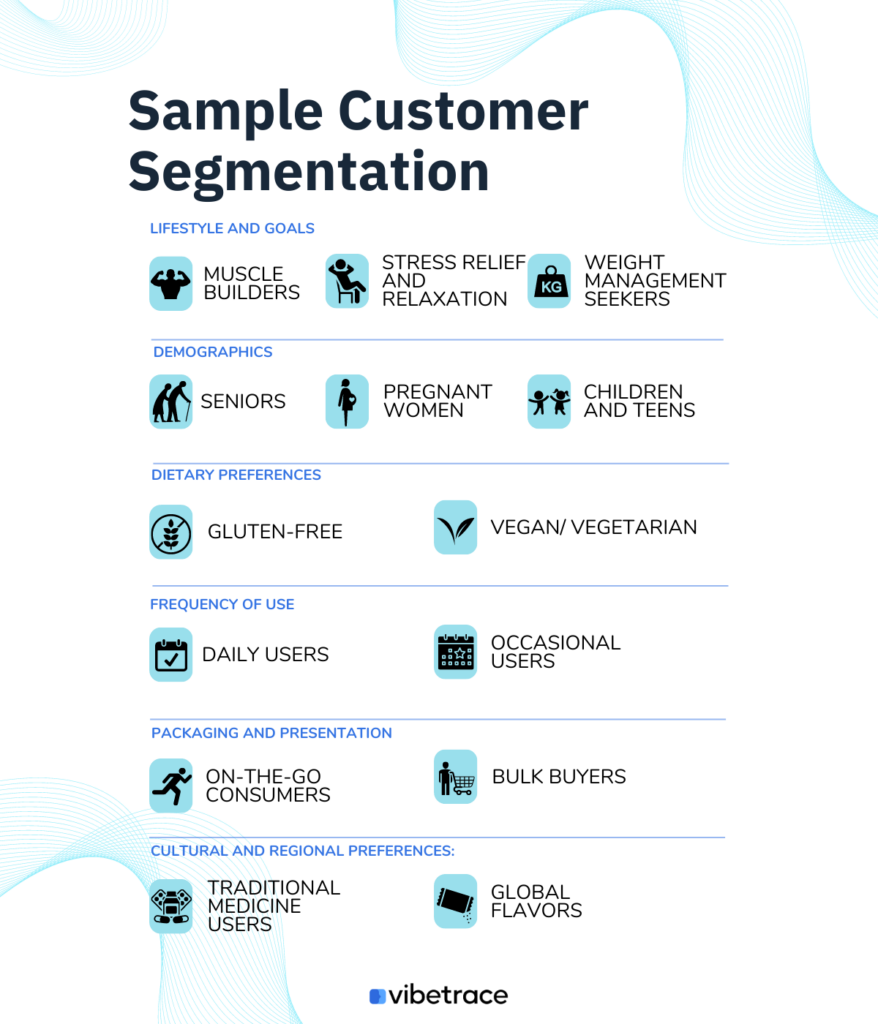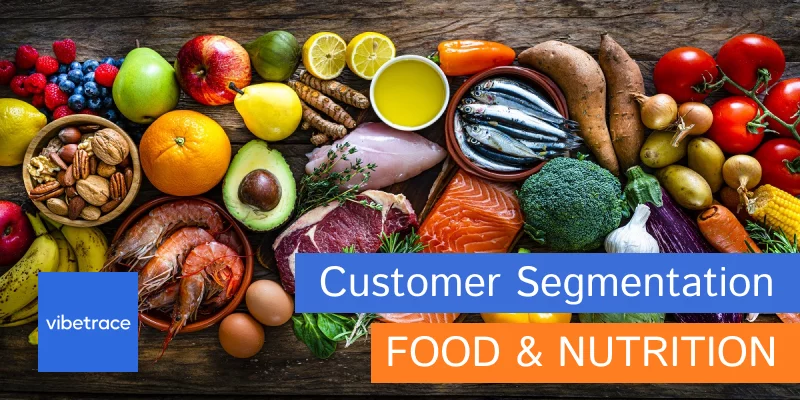Consumers in the food and nutrition industries consist of a wide range of audiences. Each has its own characteristics, personalities, interests, age group, and professions. This makes it easy to enter the industry, but you have to choose a niche where your business belongs based on the products you offer.
As a matter of fact, there is no shortcut to a successful business, but learning to segment your customers will mean a lot in the future and will help you increase conversion by targeting the right people.
With the use of a proper automation tool, the data you gather from your consumers is directly added to your Customer Database.
Keep reading, and you’ll learn about the different types of customer segmentation in a food and nutrition store. Now, let’s first jump into understanding more about the trends that impact the industry.
Overview of Consumer Trends Impacting the Food and Nutrition Industry
According to Zion Market Research, the industry’s market size is expected to reach USD 307.8 Billion by 2028.
The food and nutrition industry has been continuously growing, but there are several trends in the market that affect the industry. As these trends keep changing, you must be aware of them so you can align them with your goals and increase sales while meeting customer demands.
Additionally, you can enhance and differentiate your offerings, unlocking future growth for your business.
Here are a few of the current market trends that directly affect the food and nutrition industry:

New Supplements in the Market
Nutraceutical companies are launching new supplements with ingredients that most consumers consider when purchasing products from food and nutrition stores.
Some of the ingredients that are popular among consumers include turmeric, Irish moss, and even mushroom coffee.
Due to customer demands, many companies have started to introduce more supplements into the market.
Growth of Collagen Supplements
Collagen is known to offer numerous benefits and has various uses, including improving skin, nails, hair, and joint health.
One of the most common types of collagen is fish collagen, derived from fish and used to keep skin hydrated, smooth, and firm.
Many individuals seeking anti-aging supplements opt for this kind of supplement, and for those choosing vegan alternatives, fish collagen has been shown to be as effective as bovine collagen.
Use of gummies as Supplement Form
In the current market, gummies have gained popularity due to their convenient form and appealing taste.
Some of the types of gummies available in the market include hair gummies, digestion gummies, stress relief gummies, and more.
Environmentally Friendly and Vegan Products
For several reasons, many people are turning to vegan options, considering vegan supplements as their primary choice for maintaining health. Apart from not being derived from animals, many also believe that vegan supplements are more effective than other kinds of supplements.
These supplements are made purely from plant-based ingredients.
Social Advertisements
The increase in social media users has become an effective way to enhance engagement and attract new customers. Through large-scale advertisements, the supplement industry is gaining more popularity as it promotes good health and wellness, which appeals to people.
Another form of advertisement is television commercials, which are broadcast nationwide, making it possible to reach people who are not part of the online world.
Understanding People Who Buy Food and Nutrition Store Products
The key factor driving consumers to purchase products from food and nutrition stores is the increasing demand for preventive health products, promoting a healthy body and a disease-free life.
Furthermore, the growing number of people becoming members of gyms, fitness centers, and health clubs directly impacts the rise in demand, as they seek to maintain their fitness levels.
Nevertheless, consumers of food and nutrition stores can still be segmented, especially when targeting specific niches such as kids’ supplements, liquid dietary supplements, gummy supplements, protein powders, and others.
Lastly, the online platform has become a trending distribution channel that contributes to industry growth. This channel facilitates the sales of food and nutrition through mobile-friendly and user-friendly websites, emails, paid marketing, affiliate marketing, and promotions on e-commerce platforms.
As observed today, the younger generation increasingly prefers online shopping over visiting retail stores.
Customer Segmentation Model: Definition and Benefits
The food and nutrition industry is vast and encompasses a diverse audience spanning various age groups, genders, and other demographics. The broader your target audience, the more challenging it becomes to identify the precise customers who truly require your offerings.
This is precisely why customer segmentation holds significant importance for businesses, ranging from medium to large scales. Customer segmentation involves the practice of categorizing groups of consumers into smaller segments based on their interests and needs.
Implementing customer segmentation yields several advantages, particularly in enhancing the optimization of your advertising campaigns, especially when coupled with email automation.
Furthermore, it heightens the likelihood of cultivating loyal customers who exhibit high levels of satisfaction, as you can readily establish meaningful connections with them using the pertinent information you possess.
Types of Customer Segmentation Models
When operating a food and nutrition e-commerce store, understanding your customers is crucial for effective marketing and sales strategies.
Utilizing various customer segmentation models can provide insights into distinct customer groups, allowing you to tailor your offerings and messages to better meet their needs.
Here are some key segmentation models and their applications:

Demographic Segmentation
This model categorizes customers based on demographic factors such as age, gender, income, education, and family size
Behavioral Segmentation
Behavioral segmentation divides customers based on their purchasing behavior, usage patterns, and interactions with the store.
Psychographic Segmentation
Psychographic segmentation focuses on customers’ lifestyles, values, attitudes, and interests.
Geographic Segmentation
This model classifies customers based on their geographical location, such as country, region, city, or climate.
Needs-Based Segmentation
This model groups customers based on their specific needs or problems that your products can address.
Value-Based Segmentation
Value-based segmentation categorizes customers based on their perceived value of products and willingness to pay.
How to Choose the Best Segmentation Model
Choosing the best segmentation model may be quite overwhelming for the industry of food and nutrition due to the wide range of audiences.
Selecting a specific niche is the best way to faster growth in any business because a key factor in a successful business is knowing who your customers are.
Here are four steps on how you can choose the best segmentation model:
Identify your objectives
As you start segmenting your market for your food and nutrition store, it’s essential to identify your primary goal in creating these segments. To gain a clear understanding of your goal, you can ask yourself what you aim to achieve, what challenges you might face, and what opportunities you can leverage.
Furthermore, consider asking yourself who your target customers are and how you plan to communicate with them.
Your objectives will assist you in defining the criteria necessary to segment your customers effectively, thereby maintaining detailed segmentation.
Choose Your Segmentation Model
If you explore various online resources on the internet, you will find numerous methods for segmenting your market effectively for your food and nutrition store.
You simply need to revisit the different types of segmentation to gain a deeper understanding of what you can apply to your business. Once you have a better grasp of these concepts, you can start combining them to create more detailed and meaningful segments for your business.
Do you like this article?
Join our CX for Retail dedicated newsletter!

Stay connected to what’s really important to optimize your digital revenues.
By clicking the button, you accept our Terms & Conditions. Also you will need to confirm your email address.
A few examples include geodemographics (combining geographic and demographic factors), benefit segmentation (merging behavioral and psychographic aspects), and attitudinal segmentation (integrating psychographic and behavioral elements).
Assess The Segments You Chose
After segmenting your market, you need to evaluate the segments you have selected. You should consider various factors such as growth potential, size, compatibility, accessibility, and responsiveness.
To achieve this, you can utilize both qualitative and quantitative methods, including research, surveys, polls, interviews, and in-depth analysis. This process will enable you to determine if the chosen segment is sufficiently substantial within your chosen niche, ensuring it remains profitable and sustainable in the future.
Furthermore, it will aid in identifying whether the segment is poised for growth or decline. Additionally, it will provide insights into the ease of reaching your customers and how well your business objectives and vision align with the chosen segmentation model.
Test and Improve Your Segmentation Model
Finally, once you have decided to proceed with the segmentation approach you’ve chosen, ensure that you test and refine your segmentation model to guarantee its relevance and reliability. You can implement a small experiment to measure responses using various marketing metrics. By comparing the results against your established goals, you’ll be able to adjust your segmentation model as needed.
Remember to consistently monitor your ongoing campaigns, enabling you to regularly update your segmentation model to align with current market trends.
Segmentation modeling is not a one-way process. In any business, regardless of the chosen niche, it’s crucial to continuously monitor your segmentation models to ensure they remain aligned with your business objectives.
Example of Customer Segmentation for Food and Nutrition Store Consumers
The food and nutrition industry market can be segmented using the different types of segmentation approaches so now let’s get into more realistic examples so you can understand how to choose your segmentation model.

Lifestyle and Goals
Muscle Builders: Individuals focused on building muscle mass may prefer protein bars, creatine powders, and amino acid supplements.
Stress Relief and Relaxation: Customers seeking stress relief might be inclined towards products containing calming herbs like chamomile or magnesium.
Weight Management Seekers: Customers looking to lose or gain weight might be interested in meal replacement shakes and appetite suppressant products.
Demographics
Seniors: Older customers might be interested in bone health supplements, joint support products, and memory-enhancing formulas.
Pregnant Women: Prenatal vitamins and mineral supplements could be marketed to expectant mothers for a healthy pregnancy.
Children and Teens: Gummy vitamins and kid-friendly supplements could cater to the needs of younger consumers.
Dietary Preferences
Gluten-Free: Individuals with gluten sensitivities could be targeted with gluten-free meal replacement shakes and digestive enzyme supplements.
Vegan/Vegetarian: Those following a plant-based diet may be interested in plant-derived protein powders, vitamin B12 supplements, and vegan omega-3 capsules.
Frequency of Use
Daily Users: Regular supplement consumers might be interested in subscription-based models for products they use on a daily basis, such as multivitamins.
Occasional Users: Target customers who purchase supplements seasonally, like vitamin D during the winter months or detox supplements after holidays.
Health Conditions:
Packaging and Presentation
On-the-Go Consumers: Offer convenient single-serving options for customers who are frequently on the move, like protein bars and energy shots.
Bulk Buyers: Provide cost-effective options for those who prefer to buy supplements in larger quantities, such as powder tubs and bulk discounts.
Cultural and Regional Preferences:
Traditional Medicine Users: Consumers from cultures valuing traditional medicine might prefer herbal supplements rooted in their heritage.
Global Flavors: Offer supplement options with unique flavors and ingredients inspired by different cuisines from around the world.
Wrapping Up
Customer segmentation can be accomplished through various methods, and adhering to a set of guidelines for implementing it in campaigns will help you identify areas for improvement.
Continuously enhance and adjust your customer segmentation models to evolve alongside the shifts and changes in customer interests and behaviors.
To commence, ensure you explore one of the most effective means of engaging with your customers: crafting newsletters. These newsletters foster brand loyalty and maintain a strong connection with customers throughout their journey.
Leverage automation tools such as Vibetrace, which boasts exceptional features and user-friendly navigation for customer segmentation. Moreover, Vibetrace provides an extensive array of templates – over a thousand – to simplify the editing process, tailoring them to align with your customer’s interests.

